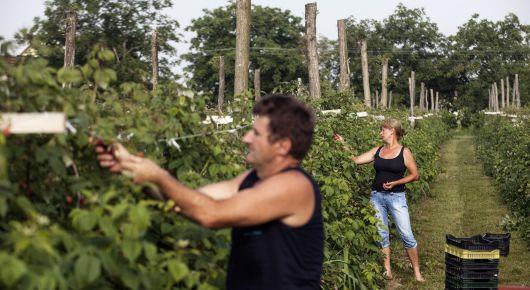FAO study suggests policies to strengthen family farms in Serbia

Rich arable lands, favourable natural conditions, and continuity of family farms means that Serbia’s agriculture plays a considerable role in the country’s economy in comparison to neighbouring or European Union countries. Yet, smallholders and family farmers, the backbone of its agriculture, face several challenges and constraints as outlined by a new FAO study conducted together with Faculty of Agriculture, University of Belgrade.
The Smallholders and family farms in Serbia study was written to better understand their situation and trends and, ultimately, provide policy recommendations on further developing family farms, while at the same time ensuring inclusive growth, improved rural livelihoods, and reduction of rural poverty.
“In Serbia, despite the importance of small farms and their contribution to food security and the rural community, they have largely been left out of the focus of both the scientific community and policymakers,” said Morten Hartvigsen, FAO regional initiative delivery manager. “An official legal definition of smallholders and family farms is lacking, too, and that should be provided.”
In the past ten years, agriculture, forestry, and fisheries accounted for on average 9.2 percent of the total gross value added and employed 21 percent of the labour force. The sector is characterised predominantly by high volatility in growth rates caused by frequent extreme weather events, such as drought and floods.
The profile of farm managers, in terms of average age, education, and activity – especially if they are women – is not conducive to a sustained development of the sector. Therefore FAO recommends enhanced access and capacity to innovate, and new mechanisms to assist farmers’ exit from farming and the transfer of resources to younger generations.
Trade and market participation is another area with potential for improvement.
Although the majority of farmers participate actively in agrifood markets, they mostly sell raw, unprocessed products through informal channels, such as direct selling, spot markets. or barter exchange. These channels are often informal as well.
“Integration in the agrifood supply chain is hampered mainly by the incompatibility with food safety and hygiene standards, lack of traceability and market infrastructure, high transaction costs, and labour shortages,” says Professor Natalija Bogdanov, University of Belgrade, when listing the main issues. “Thus, policy incentives should foster market participation, rather than productivity and market orientation.”
Modernisation and technological development, investments in market and wholesale facilities, establishing partnerships, and coordination are just a few elements that could help here, especially in view of the possibility of Serbia joining the European Union and its free trade area in the future.
Formalisation of agricultural work and generation of new employment opportunities, especially for women and youth, could further increase the competitiveness and development of rural areas.
The study highlights that the challenges of smallholders and family farms in Serbia are complex and multidimensional. To address these challenges, policymaking should become better coordinated and more comprehensive, and policy implementation should create a balance between direct support and rural development measures.
The 125-page study is available in English and includes a Serbian summary that presents the main findings. It was produced under the umbrella of FAO’s regional initiative on empowering smallholders and family farms for improved rural livelihoods and poverty reduction.
15 April 2020, Budapest, Hungary
